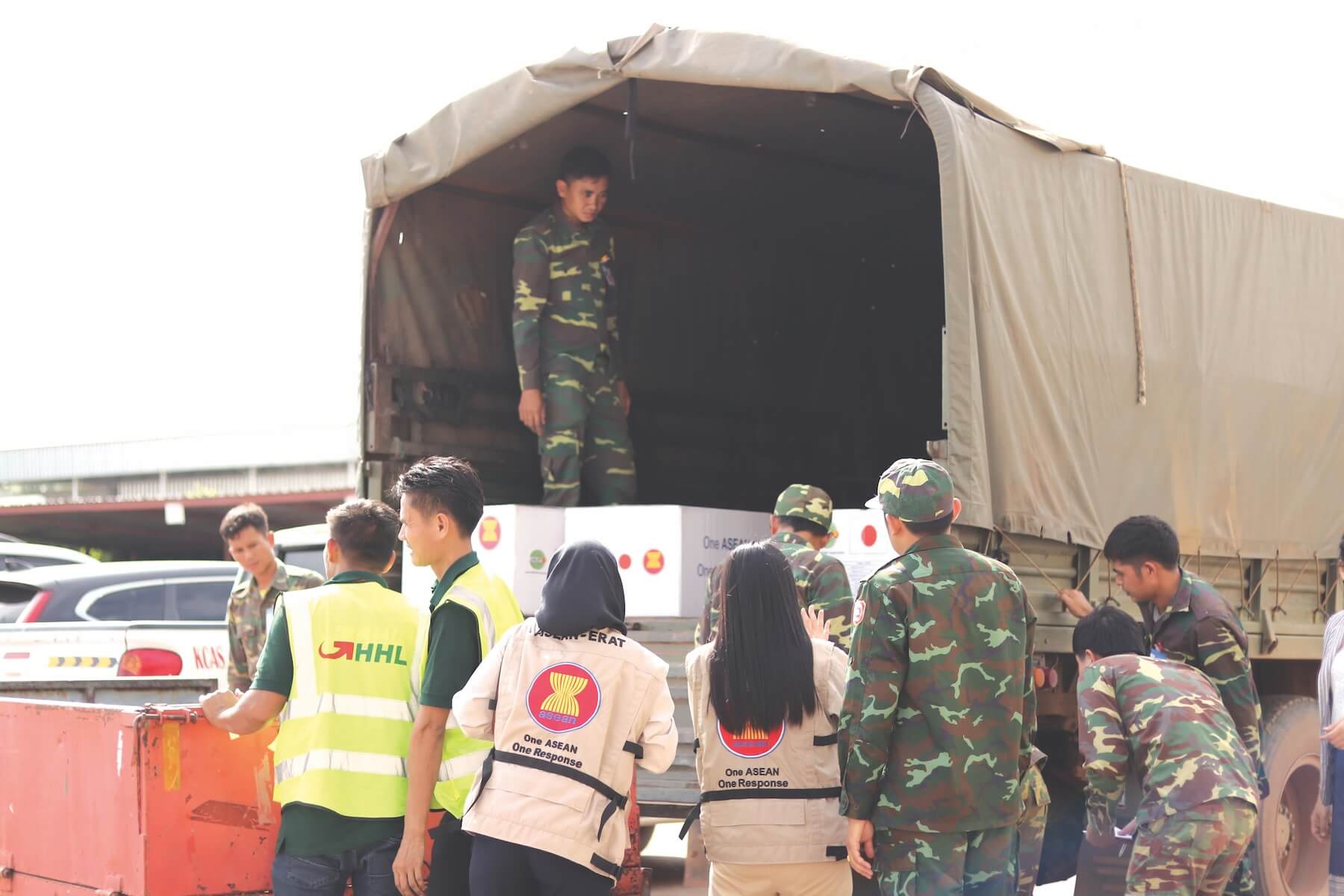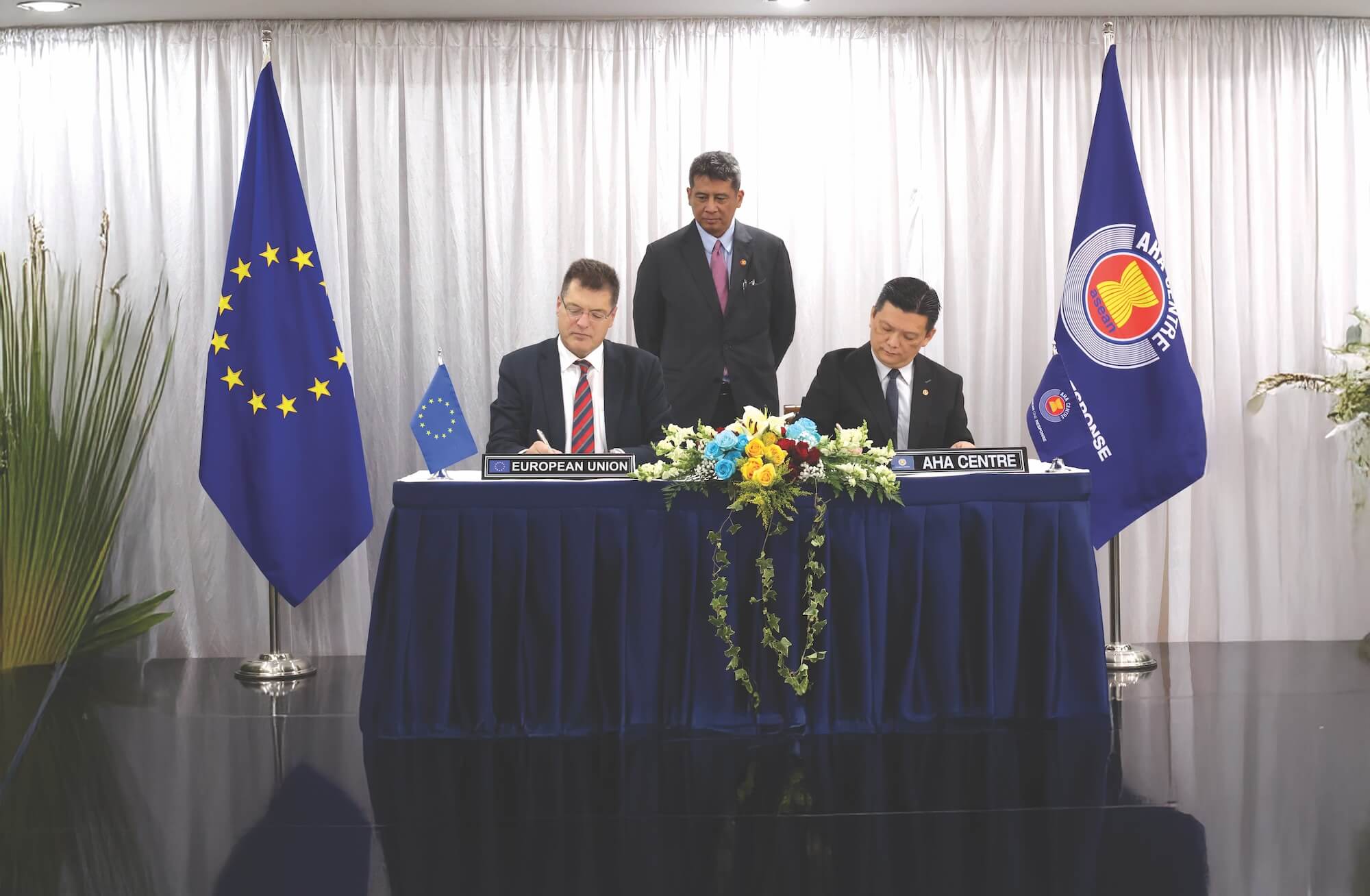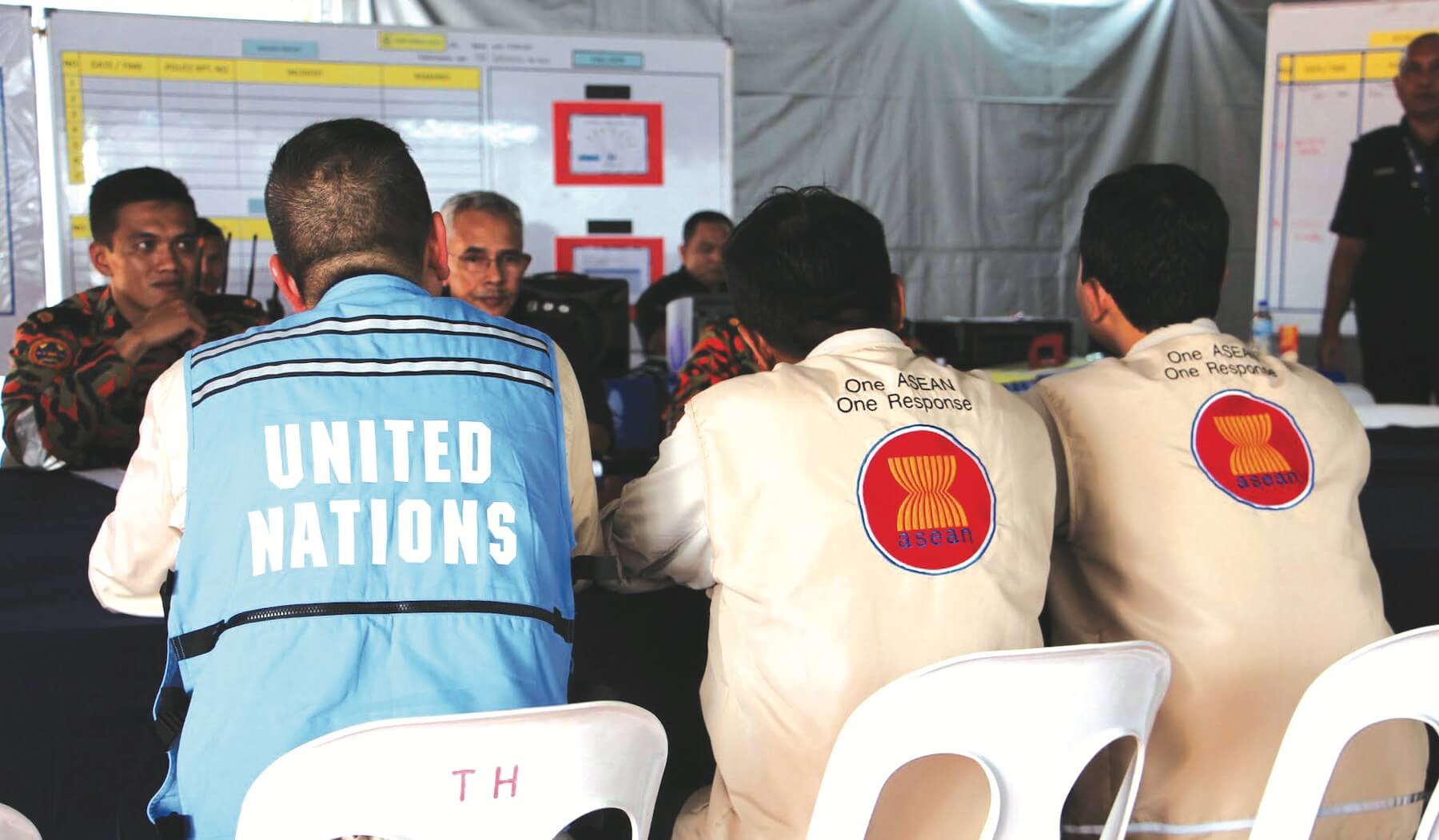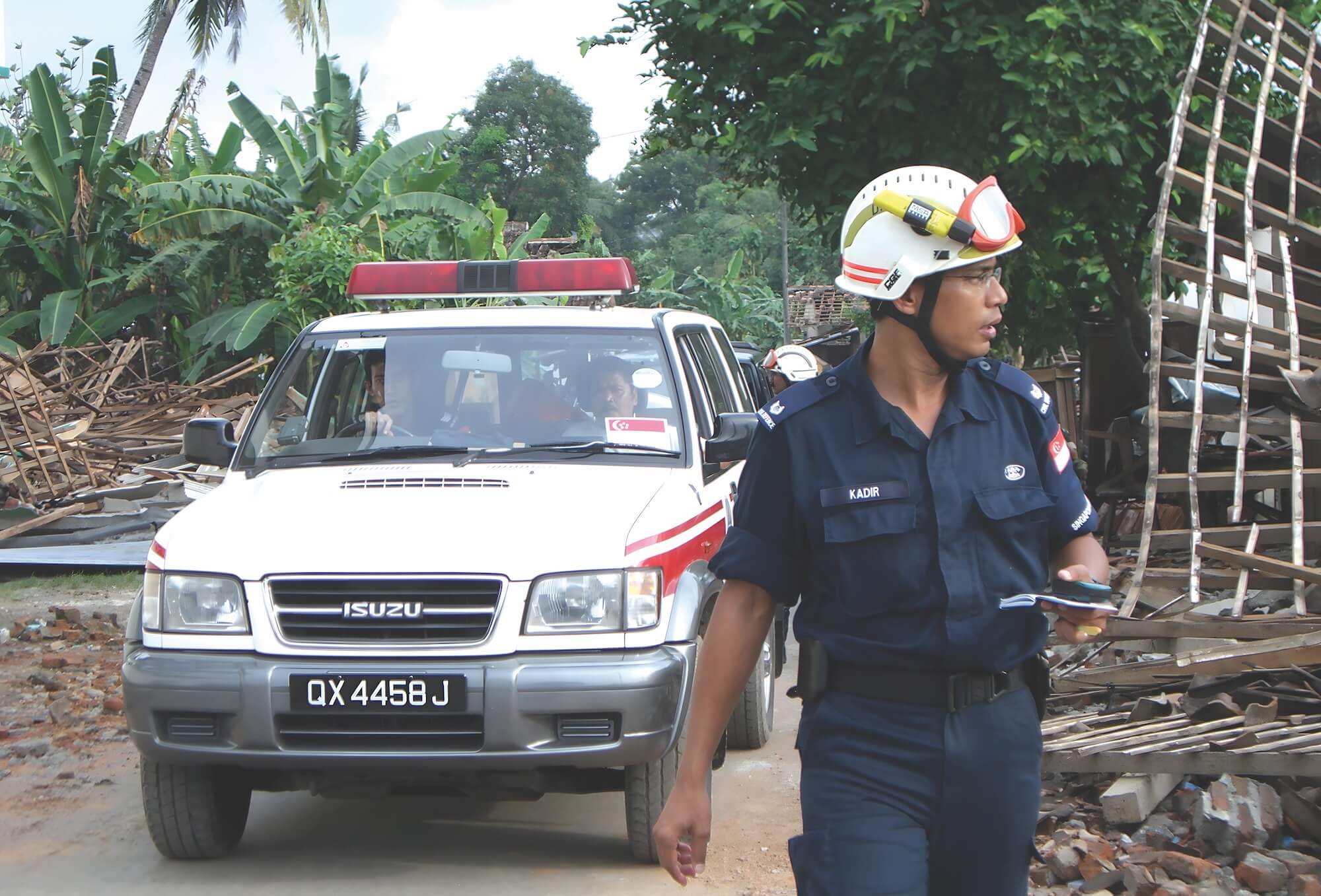





The devastation wrought by the 2004 Indian Ocean Tsunami spurred the world into action, with the ASEAN Member States playing a significant role in the response. In the immediate aftermath, the ASEAN Leaders issued the Declaration on Action to Strengthen Emergency Relief, Rehabilitation, Reconstruction and Prevention on the Aftermath of Earthquake and Tsunami Disaster. The declaration called for mobilising resources for emergency relief and rehabilitation programmes. At the same time, it recognised the need to improve preparedness and coordination, committing to forming regional mechanisms for disaster prevention and mitigation, particularly a regional instrument on disaster management and emergency response.
In July 2005, seven months after the tsunami, the ASEAN Foreign Ministers signed the ASEAN Agreement on Disaster Management and Emergency Response (AADMER). The AADMER became the blueprint for “coordination, technical assistance, and resource mobilisation in all aspects of disaster management.”
In line with the provisions of the AADMER, the ASEAN Ministerial Meeting on Disaster Management (AMMDM) and the ASEAN Committee in Disaster Management (ACDM) established the ASEAN Coordinating Centre for Humanitarian Assistance on disaster management (AHA Centre) in 2011 as the operational engine of AADMER.
The AHA Centre adheres to the principle of “One ASEAN One Response: ASEAN Responding to Disasters as One in the Region and Outside the Region.” In disaster situations, the AHA Centre taps the ASEAN Emergency Response and Assessment Team (ASEAN-ERAT), a quick response team that can support affected ASEAN Member States. The centre also maintains a regional stockpile of goods under the Disaster Emergency Logistics System for ASEAN (DELSA), which can be distributed rapidly in emergencies. The centre has adopted the Standard Operating Procedure for Regional Standby Arrangements and Coordination of Joint Disaster Relief and Emergency Response Operations (SASOP) as the primary protocol in disaster response.
Building the capacity of ASEAN Member States’ national disaster management organisations is also a priority of the AMMDM and ACDM. The AHA Centre is implementing the AHA Centre Executive Programme, an intensive training course aimed at enhancing the “participants’ knowledge, skills and behaviours as humanitarian experts, multi-stakeholder collaborators, result-oriented managers, and effective leaders.”
These initiatives have resulted in better preparedness and speedier response times, minimising the loss of life, property, and resources. ASEAN’s role has come to be recognised globally. The 2024 World Risk Poll noted that while Southeast Asia is one of the most disaster-prone regions in the world, its population are much “more prepared to face disasters” and “feel a greater sense of agency in being able to protect themselves.” This is mainly credited to ASEAN’s “heavy regional focus on responding to natural hazards.”
In 2021, the Bandar Seri Begawan Declaration on the Strategic and Holistic Initiative to Link ASEAN Responses to Emergencies and Disasters (ASEAN SHIELD) called for the promotion of greater cross-pillar and cross-sectoral cooperation and coordination to better prepare for, address and recover from emergencies and disasters affecting the Southeast Asian region effectively and holistically, to better protect the ASEAN Community from the detrimental impacts of these challenges, and to minimise further disruptions to the lives and livelihoods of the peoples of ASEAN. It also called for a review of the Terms of Reference of the Secretary-General of ASEAN as the ASEAN Humanitarian Assistance Coordinator, in which the ASEAN Leaders at the 14th ASEAN Summit in 2009 “agreed to entrust the ASEAN Secretary-General to serve as ASEAN’s humanitarian assistance coordinator which can be activated any time at the request of the affected Member State in the event of a major disaster, whether it be a natural disaster or a pandemic.”
In 2023, the ASEAN Leaders adopted the ASEAN Declaration on Sustainable Resilience to enhance collaboration in strengthening climate and disaster resilience for sustainable development. It serves as the enabling framework that aligns ASEAN key initiatives with the Sendai Framework for Disaster Risk Reduction (SFDRR), the Sustainable Development Goals (SDGs), the United Nations Framework Convention on Climate Change (UNFCCC), the Paris Agreement and the Asia-Pacific Action Plan 2021- 2024. This year, the AMMDM adopted the Declaration on Building a Resilient ASEAN through Inclusive and Sustainable Disaster Recovery. This declaration commits to strengthening the capacity of ASEAN Member States to recover from disasters by, among others, exploring innovative financing for post-disaster recovery activities. ASEAN also commemorates the 20th anniversary of the Indian Ocean Tsunami, hosted in Brunei Darussalam, Indonesia, Malaysia, and Thailand.
In light of the escalating risks and challenges posed by disasters in the ASEAN region, the ASEAN Vision 2025 on Disaster Management underscores the imperative for ASEAN to be the global leader in disaster management. To achieve this, the region must prioritise efforts to prevent, respond to, mitigate the risks of, and foster sustainable resilience within its communities.








